Several hundred paintings and sculptures in the Institute’s collections depict men and women who participated in the American Revolution, picture historical events and places related to the War for Independence, and memorialize the ideals and achievements of the revolutionary era. Most of these works of art are portraits created during the subjects’ lifetime, revealing the faces of men and women who fought for American independence. In many cases, the portraits in the collections are the only known likenesses of the individuals they depict. A particular strength of the collections is more than forty portrait miniatures, small but highly detailed portrayals of soldiers and their loved ones that were intimate keepsakes for close family members.
Artists including Charles Willson Peale, Ralph Earl, Gilbert Stuart, John Trumbull, Frederick MacMonnies and Paul Wayland Bartlett are represented in the collections.
Explore other important paintings of the period in the collections of other institutions in Ten Great Revolutionary War Paintings and Ten Great American Revolution Paintings, 1790-1860, part of our series Treasures of the American Revolution.
Explore Portrait Miniatures
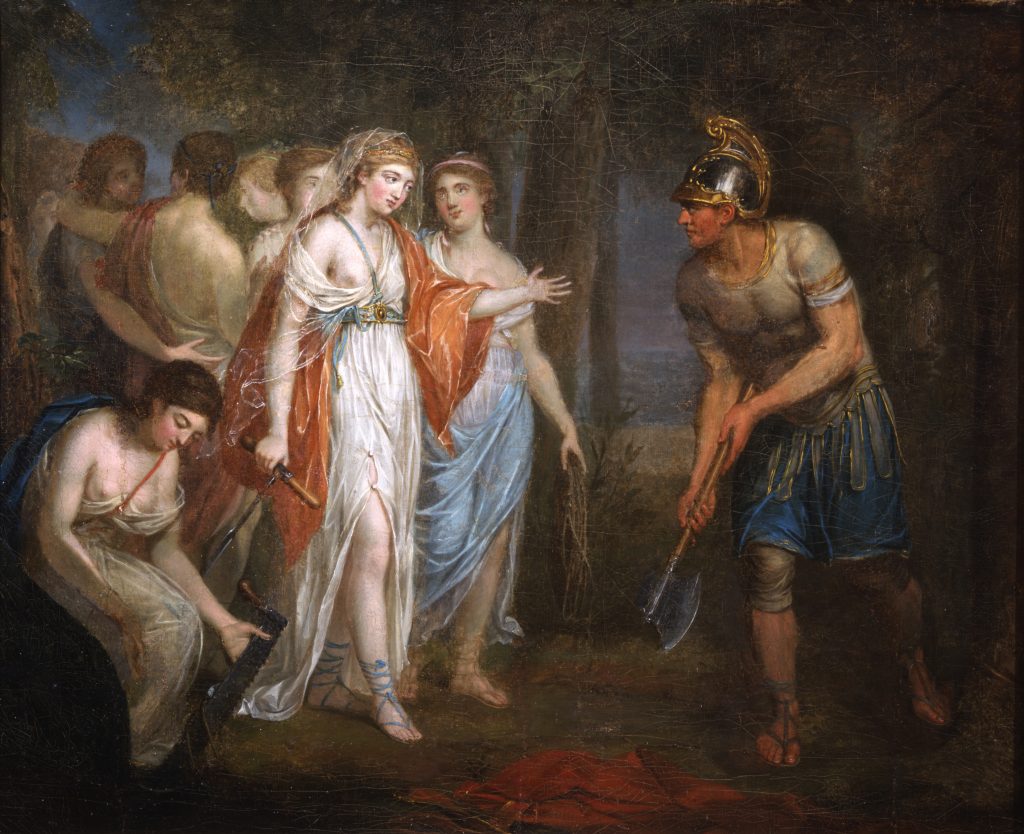
The Return of Cincinnatus
Attributed to Angelica Kauffman (1741-1807)
ca. 1775Gift of Margaretta Kingsbury Maganini, 1969
Eighteenth-century Americans and Europeans celebrated the ancient Roman general Lucius Quinctius Cincinnatus, who led Rome's army against foreign invaders then resigned his commission and retired to his farm, as a model of civic virtue. Cincinnatus is the namesake of the Society of the Cincinnati, founded in 1783 by Revolutionary War veterans who committed themselves to the characteristics Cincinnatus demonstrated: humility, unselfish personal sacrifice, commitment to the public welfare and the subordination of the military to civilian rule.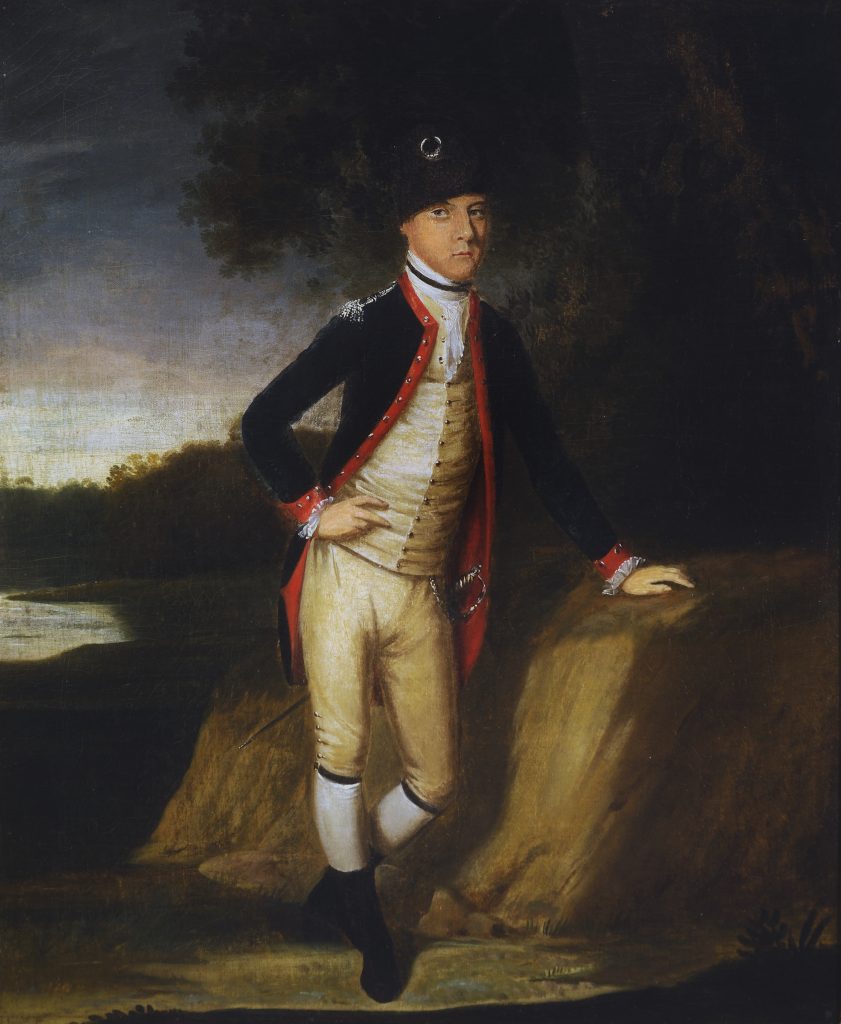
Jacob Shubrick
Henry Benbridge (1743-1812)
ca. 1777Gift of W. B. Shubrick Clymer, Society of the Cincinnati of the State of South Carolina, 1968
Born into a prominent Charleston family, Jacob Shubrick joined the Second South Carolina Regiment in May 1776 as a lieutenant. Within two months, he participated in the Battle of Sullivan’s Island, in which South Carolinians manning a makeshift fort made of Palmetto logs drove off a British fleet in Charleston Harbor. This oil portrait depicts him wearing the uniform of a captain in the Second South Carolina Regiment, a rank to which he was promoted in 1777. He died the following year of disease or wartime accident.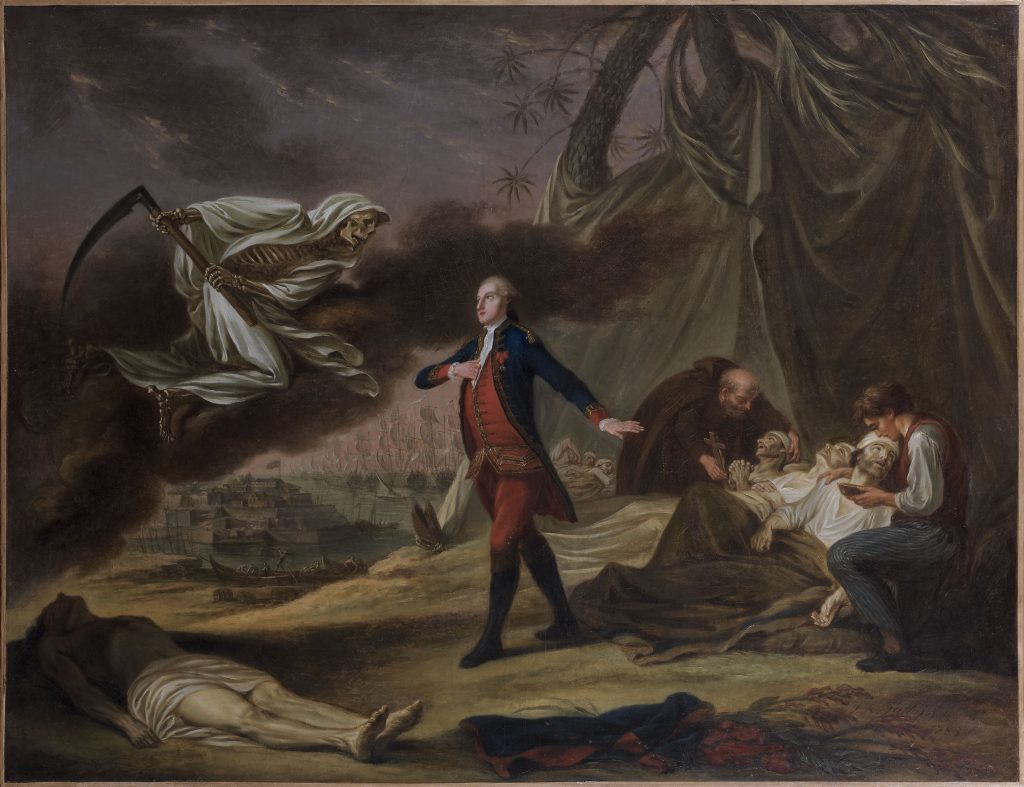
Allegorical portrait of Thomas François Lenormand de Victot
Nicolas René Jollain (1732-1804)
1783Museum Acquisitions Fund purchase, 2010
Commissioned a lieutenant de vaisseau in the French navy in 1778, Lenormand de Victot sailed for North America with Admiral d’Estaing’s squadron shortly after the French-American alliance was struck. Lenormand de Victot was wounded in the French capture of Grenada in July 1779. For the next few years he served on the Magnifique in Admiral de Grasse’s fleet in the Caribbean. Lenormand de Victot died of disease on Martinique in April 1782. The following year his family commissioned this allegorical portrait to memorialize his sacrifice.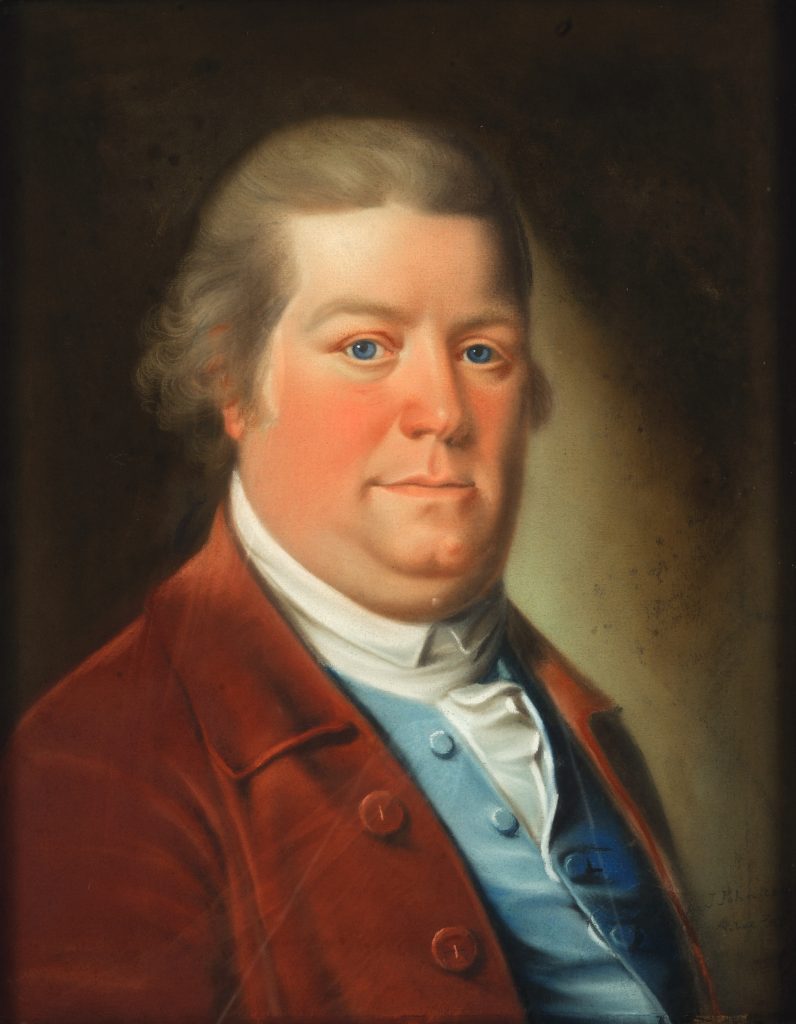
Self-portrait
John Johnston (1753-1818)
1783Bequest of Parker Soren, Esq., 1980
At the outbreak of the Revolution, John Johnston joined Henry Knox’s Continental Artillery Regiment as a lieutenant. At the Battle of Brooklyn in August 1776, Johnston was badly wounded and taken prisoner. His injuries prevented him from returning to service, and he retired from the army in October 1777. Shortly after, he established himself as a painter and decorator in his native Boston. This pastel self-portrait is one of more than fifty portraits he painted, including likenesses of numerous fellow veterans of the Revolution.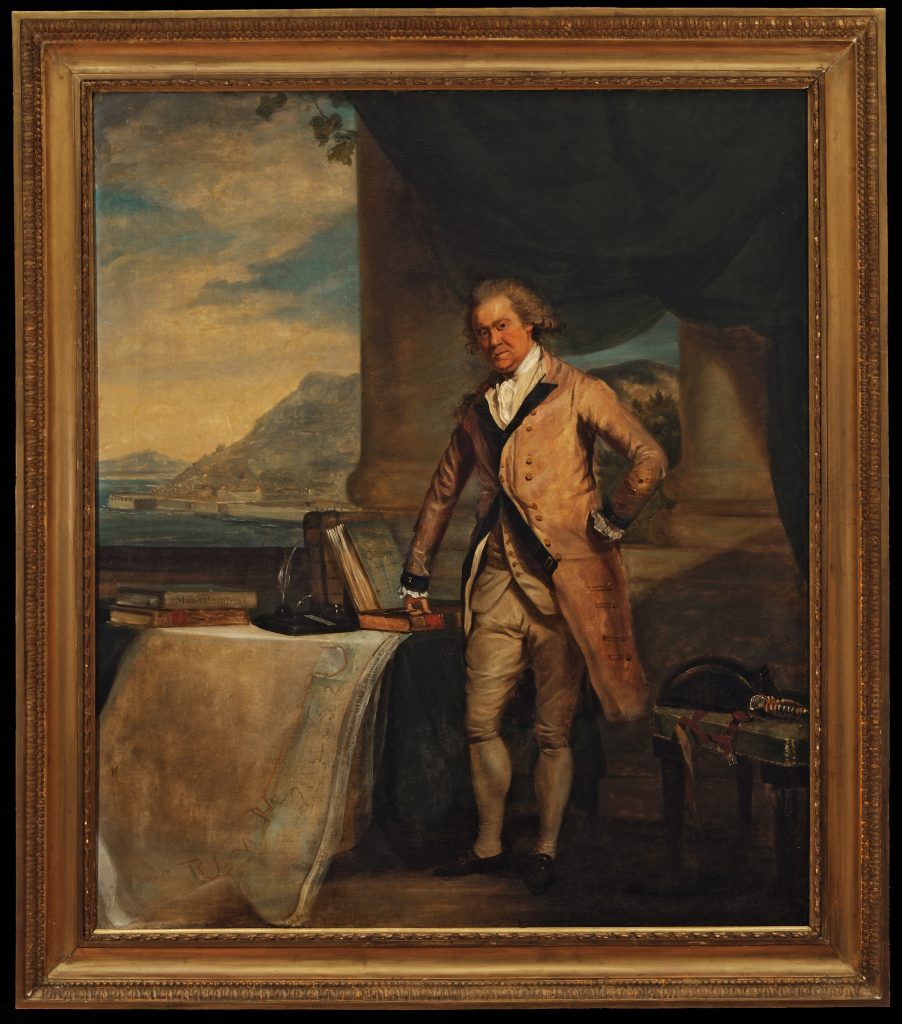
General Sir William Green
George Carter (1737-1794)
ca. 1784Museum purchase, 2016
British general William Green, the chief engineer at Gibraltar from 1760 to 1783, designed many of the fortifications and other features that helped the British hold the garrison through the Revolutionary War. In this oil portrait, Green stands in the chief engineer’s apartment at Gibraltar wearing a silk scarlet coat with blue facings, with the defenses visible in the background. His right hand rests on military treatises and his plan for the defenses at Gibraltar.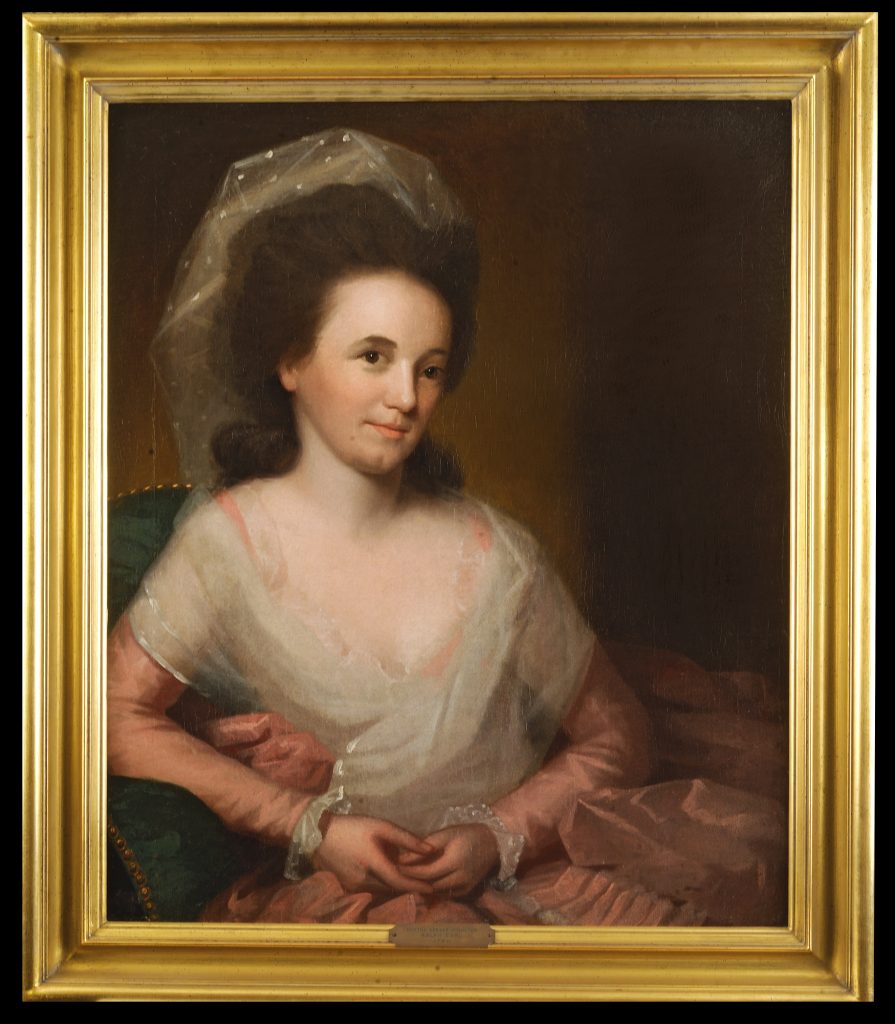
Mrs. John Johnston
Ralph Earl (1751-1801)
1785Bequest of Parker Soren, Esq., 1980
Martha Spear Johnston spent the war years caring for two young daughters while her husband, John, fought with the Continental Artillery Regiment. John Johnston commissioned Ralph Earl to paint this oil portrait of his wife after the war’s conclusion. This is the first work that Earl, a former Tory sympathizer, completed upon his return to Boston from Great Britain, where he lived for most of the war. Earl would use a similar pose and rich treatment of fabrics in other portraits of American ladies, including Elizabeth Schuyler Hamilton.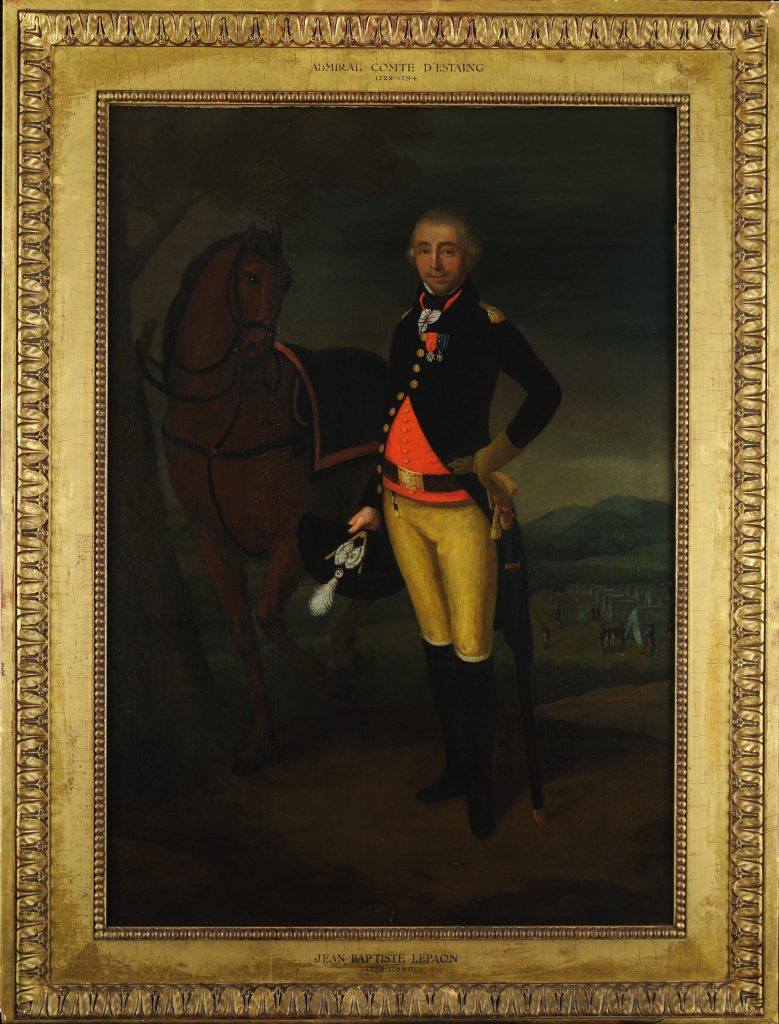
Portrait of a French officer, possibly Charles Hector, comte d’Estaing
Jean Baptiste Le Paon (ca. 1736-1785)
ca. 1785Museum Acquisitions Fund purchase, 2001
This oil portrait of a French officer has historically been identified as the comte d’Estaing. The subject wears the undress uniform of a general officer in the French navy, but the artist positioned him on land in front of an army encampment. This juxtaposition could have been a reference to d’Estaing’s background in both the French army and navy. D’Estaing entered the French army at the age of sixteen, got his first taste of naval service during the Seven Years’ War, and was named one of three vice admirals of France in 1777.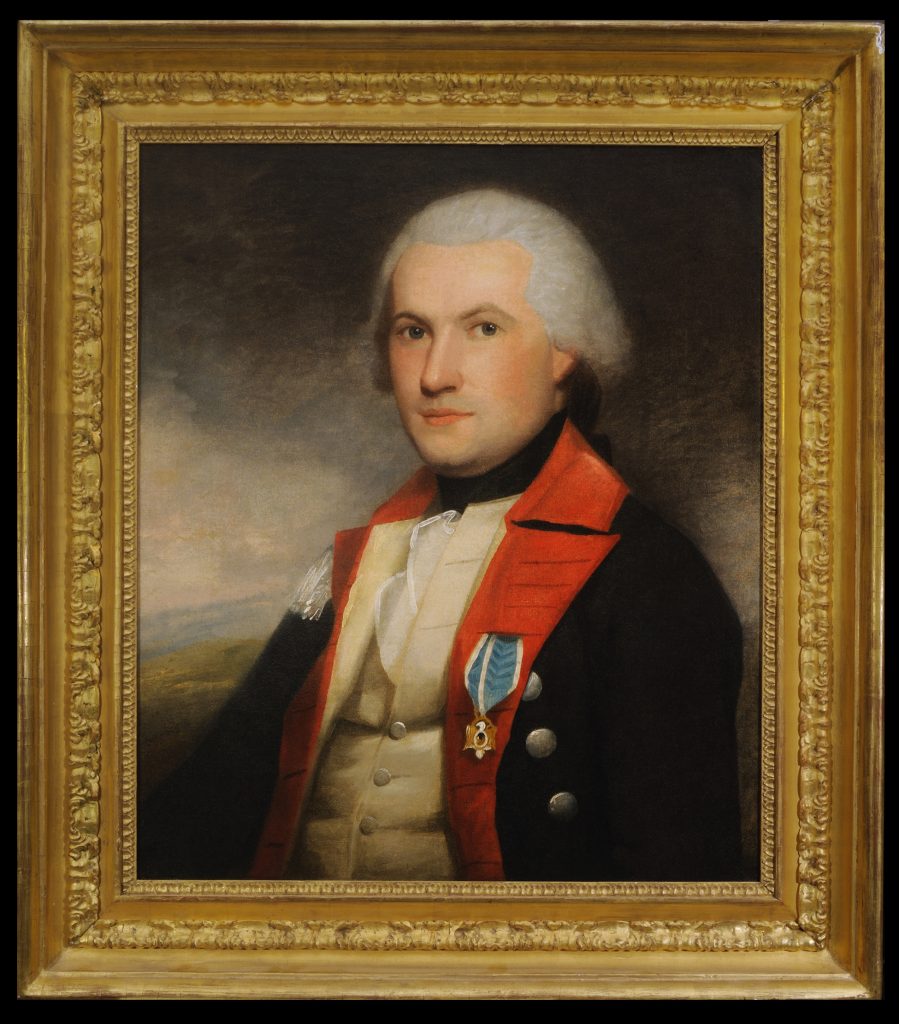
James Fairlie
Ralph Earl (1751-1801)
ca. 1786-1787The Robert Charles Lawrence Fergusson Collection
Serving through the entire Revolutionary War, James Fairlie first joined the New York City militia, then became an officer in the New York Continental Line, and finally was promoted to major and aide-de-camp to Major General Friedrich Wilhelm von Steuben. Fairlie fought in the Battles of Saratoga and Monmouth Court House, helped secure West Point in the aftermath of Benedict Arnold’s treason, and was taken prisoner on the campaign to Yorktown. This oil portrait of Fairlie in his Revolutionary War uniform was painted by Ralph Earl while the artist was in debtors prison in New York.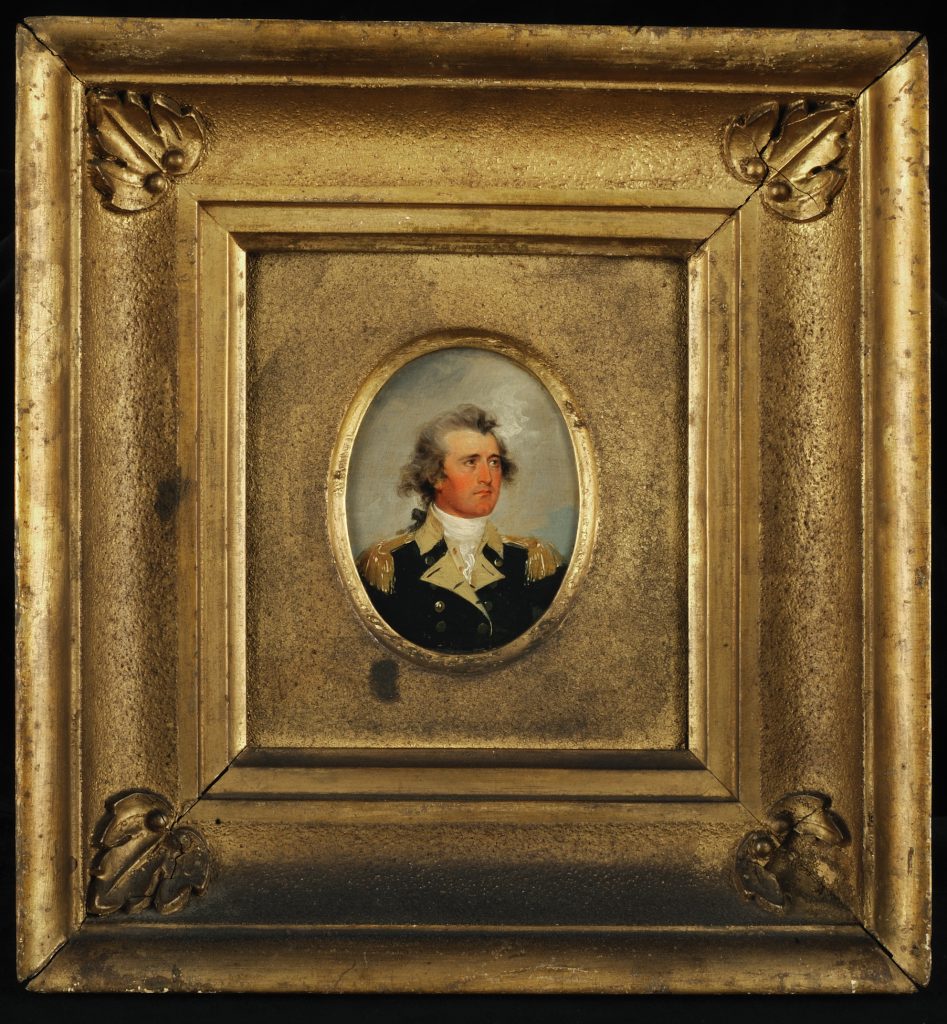
Thomas Shubrick
John Trumbull (1756-1843)
1791Gift of W. B. Shubrick Clymer, Society of the Cincinnati of the State of South Carolina, 1968
Thomas Shubrick joined his younger brother Jacob as an officer in the Second South Carolina Regiment in January 1777. During the southern campaign, Thomas Shubrick participated in the Siege of Savannah, was captured after the Siege of Charleston, became aide-de-camp to Maj. Gen. Nathanael Greene, and fought in the Battle of Eutaw Springs. After the war, Shubrick made his primary home at Belvedere Plantation in Charleston, where John Trumbull painted this small oil-on-wood panel portrait in February 1791. Trumbull captured this likeness as a study for Shubrick’s figure in a painting of the Battle of Eutaw Springs, which he never executed. Before leaving Belvedere with his original study, Trumbull painted this replica for Shubrick and his family.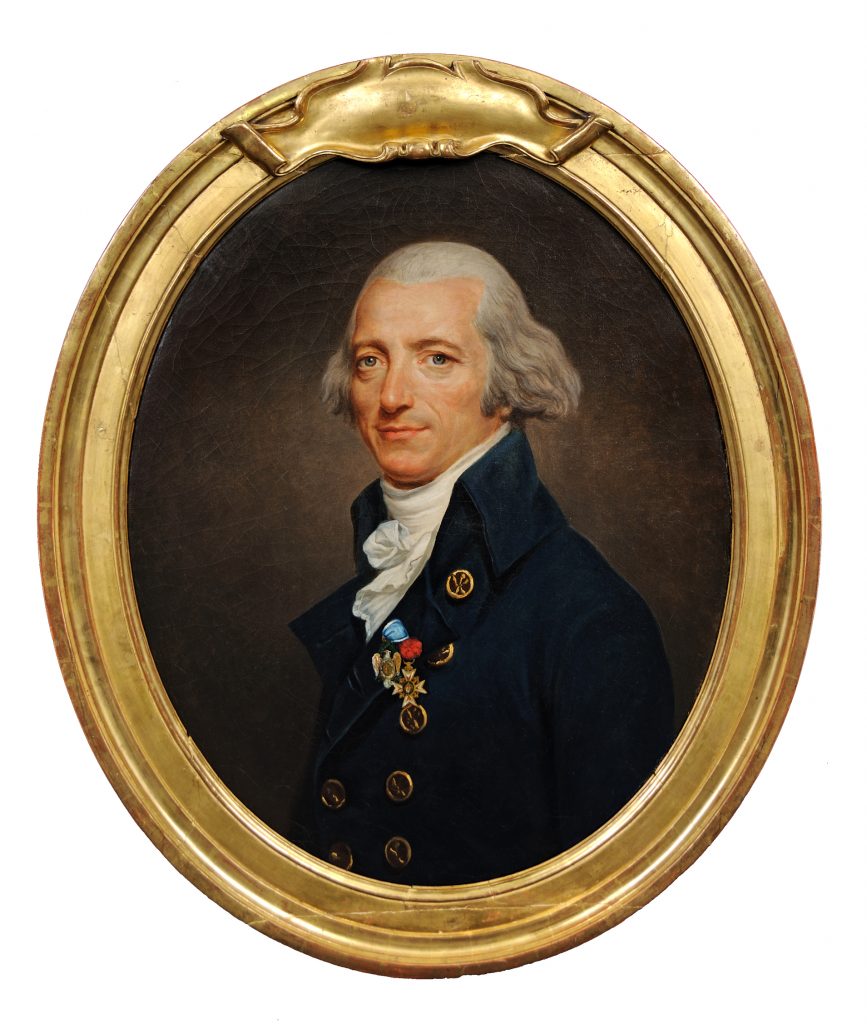
Jean-Bernard Gauthier de Murnan
Attributed to Joseph Boze (1745-1826)
ca. 1791-1796Museum Acquisitions Fund purchase, 2014
Trained as an engineer and dragoon in the French military, Jean-Bernard Gauthier de Murnan volunteered to join the American cause in 1778, when he was commissioned a major in the Continental Army. He served in the Corps of Engineers and, during the Siege of Yorktown, he commanded the Continental Army’s sappers and miners, who constructed the system of trenches that allowed the allies to approach the British lines. In this oil portrait painted during the French Revolution, Gauthier de Murnan wears the insignias of the Society of the Cincinnati and the Order of Saint Louis.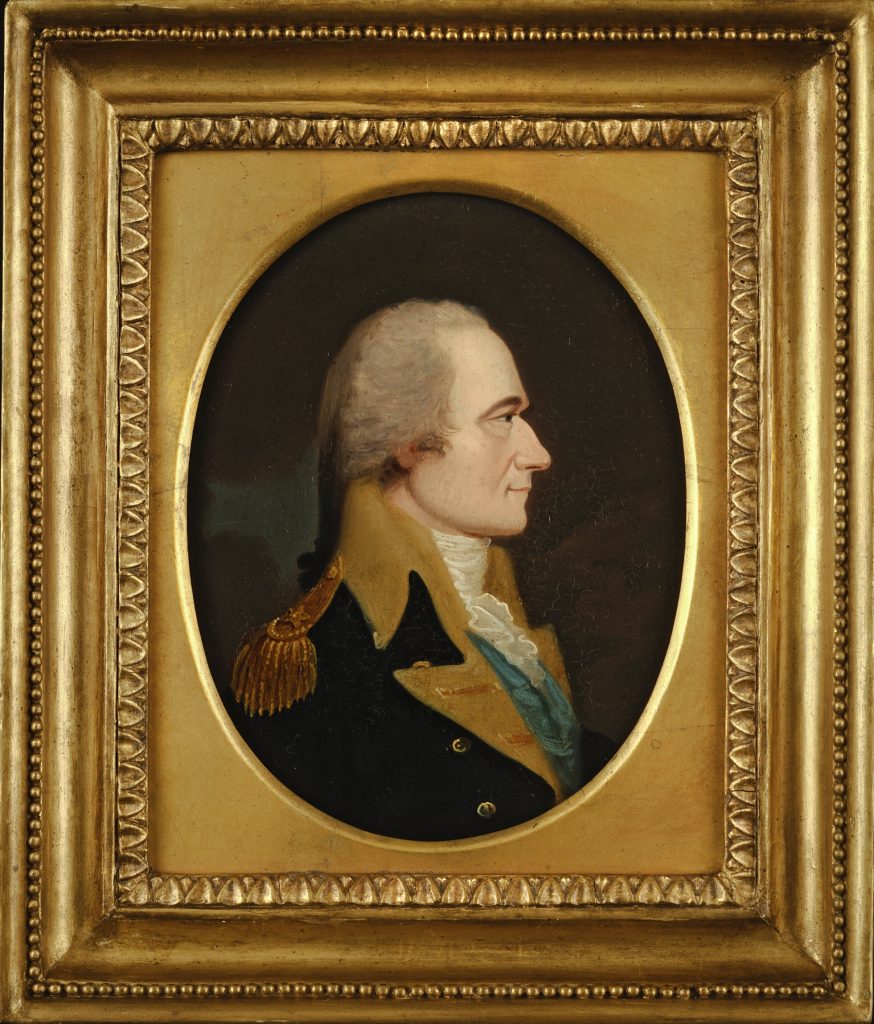
Alexander Hamilton
William J. Weaver (ca. 1759-1817)
ca. 1806Museum Acquisitions Fund purchase, 2016
Alexander Hamilton wore a uniform like the one depicted in this portrait as the senior major general in the U.S. Army during the Quasi-War with France in 1798-1800—but the artist mistakenly painted only one star on each epaulet instead of two. William J. Weaver painted versions of this posthumous oil-on-wood panel portrait for Hamilton’s friends and admirers. This example was owned in the nineteenth century by George W. Riggs of Washington, D.C.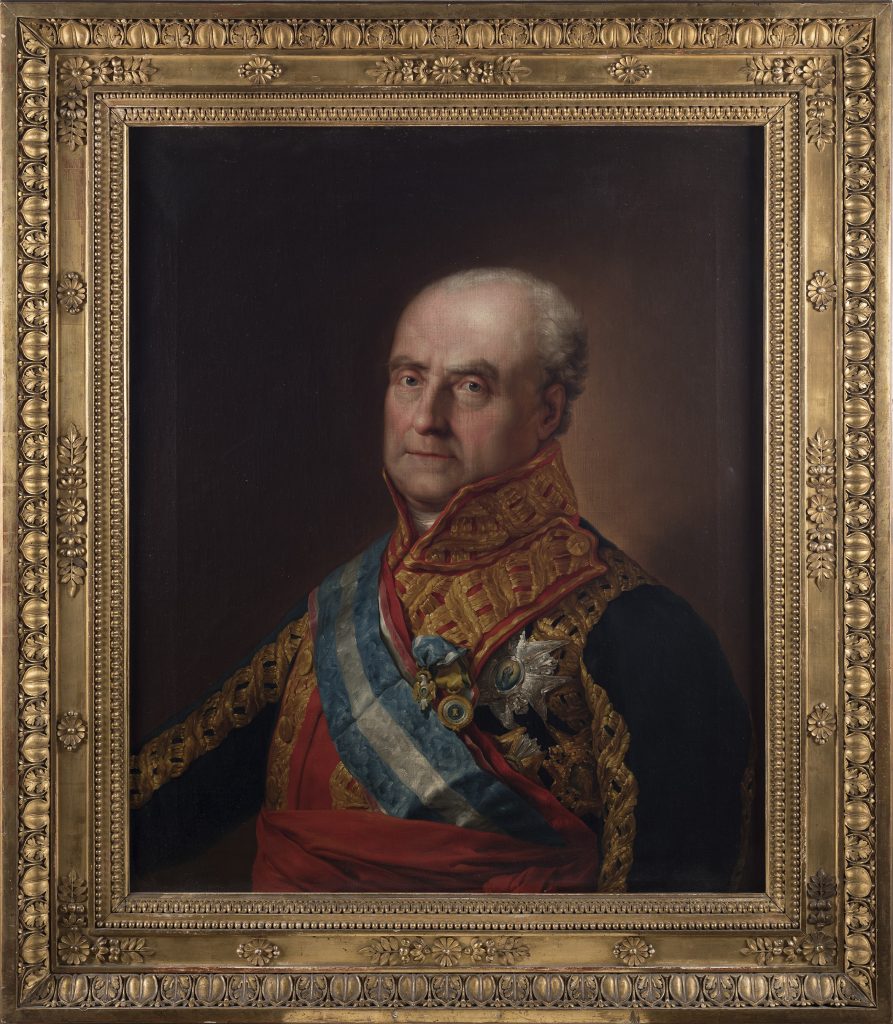
Claude-Anne de Rouvroy, marquis de Saint-Simon-Montbléru
Vicente López y Portaña (1772-1850)
ca. 1815-1818Museum Acquisitions Fund purchase, 2018
The marquis de Saint-Simon was instrumental in winning the final great battle of the Revolutionary War. With 3,500 French soldiers under his command, General Saint-Simon commanded the left wing of the allied army at the Siege of Yorktown, preventing the British army under Lord Cornwallis from escaping by land. During the French Revolution, Saint-Simon, a royalist, fled France and settled in Spain, where he joined the Spanish army. This oil portrait depicts him wearing the uniform of a Spanish general and medals honoring his service in America, France and Spain.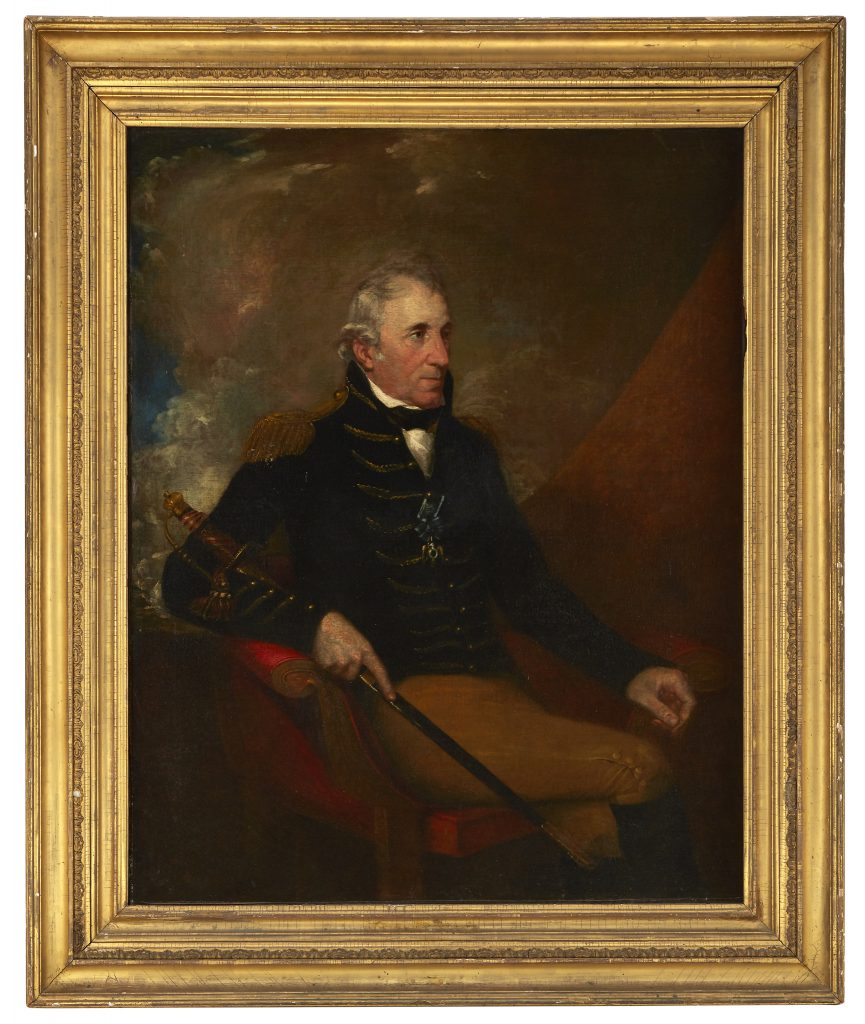
Thomas Pinckney
Samuel F. B. Morse (1791-1872)
1818Museum purchase made with dedicated gifts from 195 generous donors, 2019
South Carolina native Thomas Pinckney served in the Continental Army for almost the entire Revolutionary War, fighting with distinction in the southern campaign. This oil portrait depicts him later in life, wearing his major general's uniform from the War of 1812 and the Eagle insignia of the Society of the Cincinnati, which he led as its fourth president general.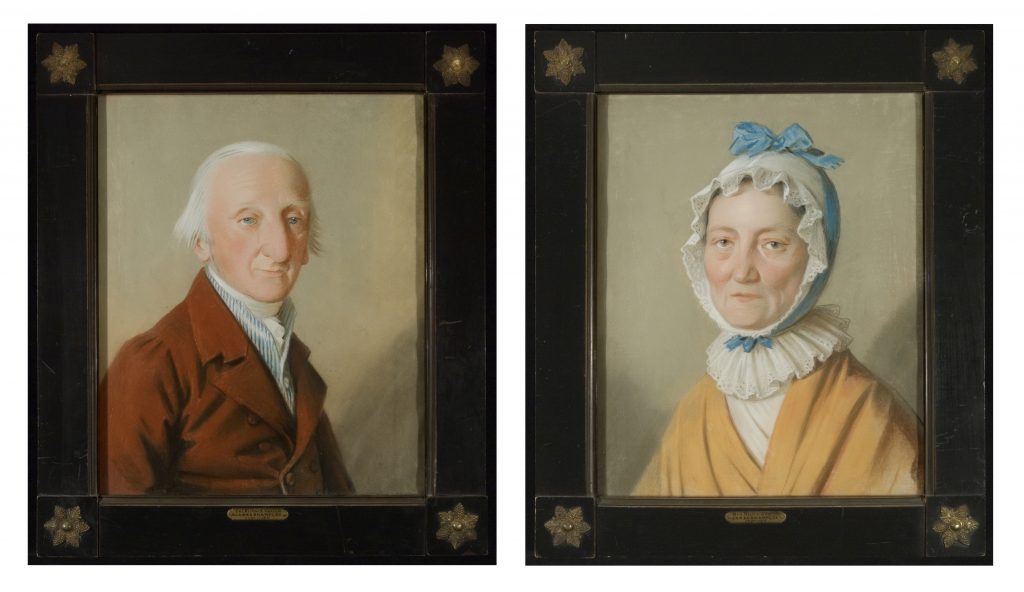
Richard Varick and Mrs. Richard Varick
Early 19th centuryMuseum Acquisitions Fund purchase, 2009
Richard Varick served in the Revolution as a captain and aide-de-camp to Generals Philip Schuyler and Benedict Arnold and, later, as military secretary to George Washington. After the war he held a succession of public offices, including mayor of New York City. In 1786 he married Maria Roosevelt, daughter of the prominent New York political family. Their matching pastel portraits were painted later in life by an unidentified American artist.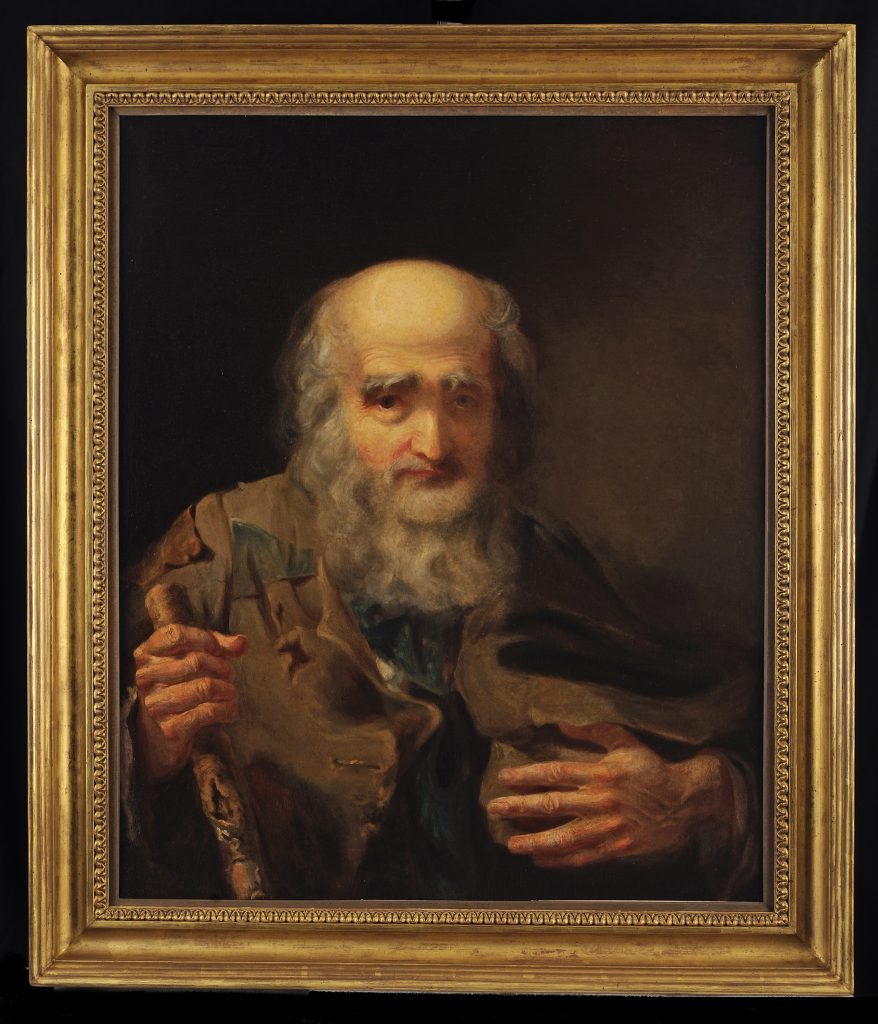
A Pensioner of the Revolution
John Neagle (1796-1865)
1830Museum purchase, 2017
This somber and arresting portrait depicts a homeless veteran living on the street in Philadelphia named Joseph Winter. The painting attracted popular attention in early 1831, when John Sartain published a mezzotint engraving of the work titled Patriotism and Age.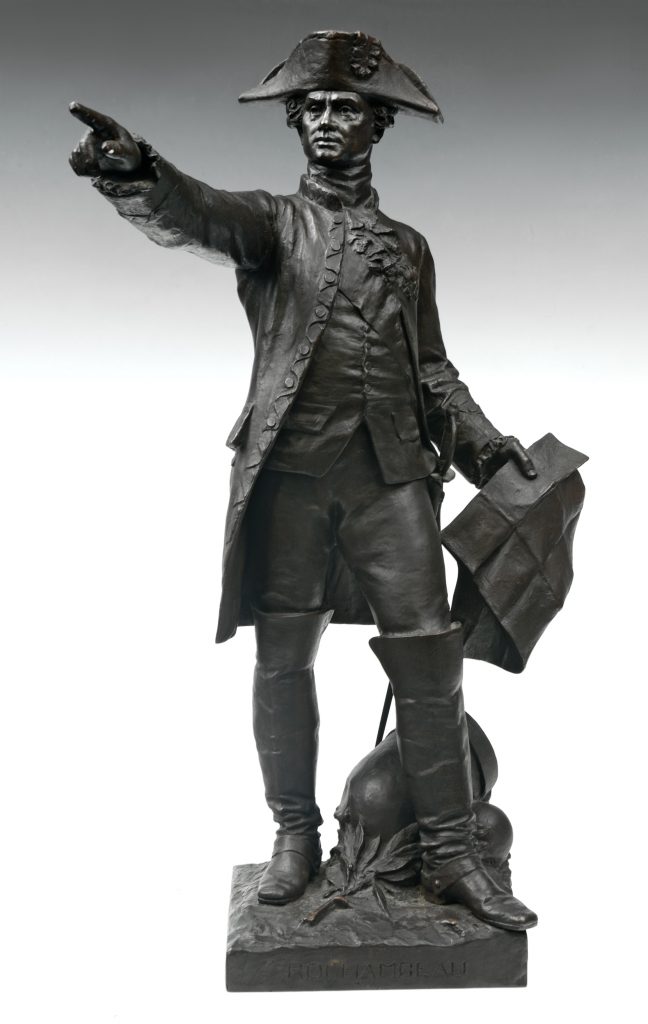
Comte de Rochambau at Yorktown
Ferdnand Hamar (b. 1869)
ca. 1885-1934Museum Acquisitions Fund purchase, 2002
This cast bronze statuette depicts French general Rochambeau at Yorktown in 1781. It is a model for four full-size statues of the French commander-in-chief that were erected between 1900 and 1934 in the United States and France.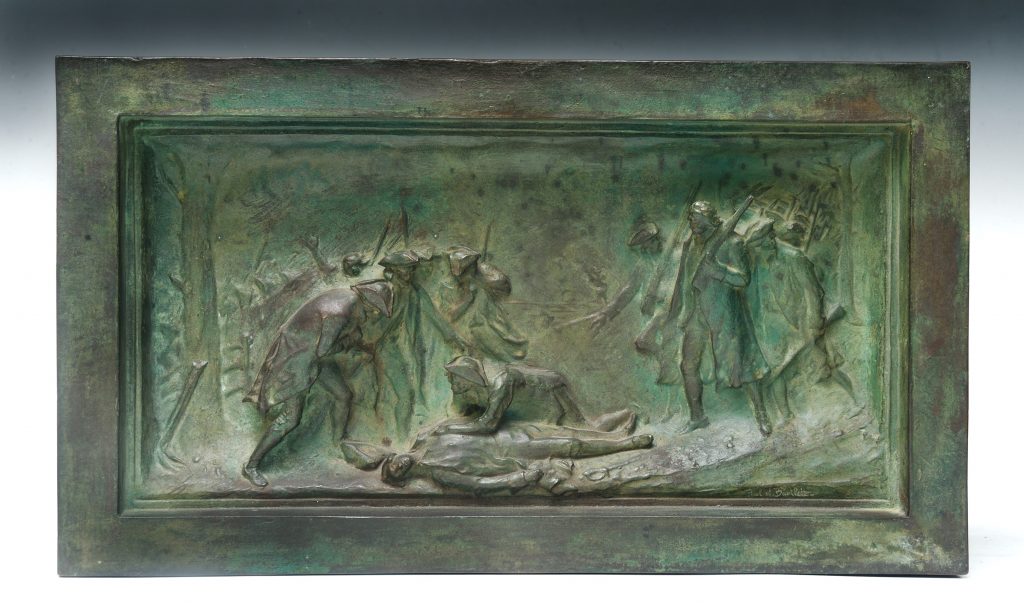
The Death of Major General Joseph Warren at Bunker Hill, June 17, 1775
Paul Wayland Bartlett (1865-1925)
Late 19th-early 20th centuryGift of Mrs. Armistead Peter III, 1958
Paul Wayland Bartlett sculpted his version of the heroic death of Massachusetts militia general Joseph Warren at the Battle of Bunker Hill as a bronze relief panel, placing loosely defined figures in a wooded setting with Warren lying in the foreground.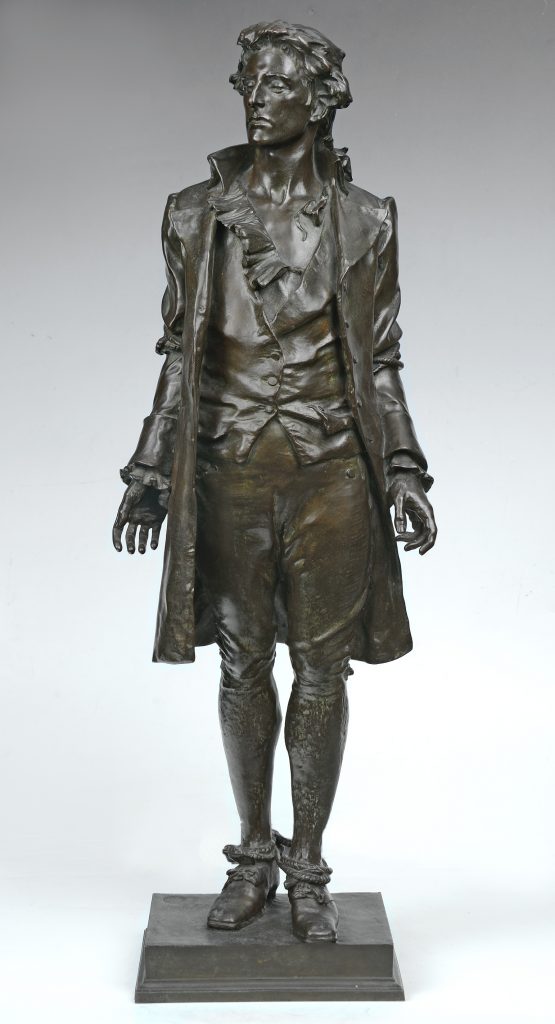
Nathan Hale
Frederick W. MacMonnies (1863-1937)
Cast by Jaboeuf et Rouard, Paris, ca. 1901-1907The Robert Charles Lawrence Fergusson Collection
Connecticut officer Nathan Hale famously volunteered for a dangerous mission spying for George Washington in New York City, only to be captured and hanged by the British in September 1776. More than one hundred years later, Frederick MacMonnies sculpted a full-length statue of Hale to be installed in City Hall Park in New York. MacMonnies sold reduced-size bronze statuettes of the work, like this one, beginning in 1890.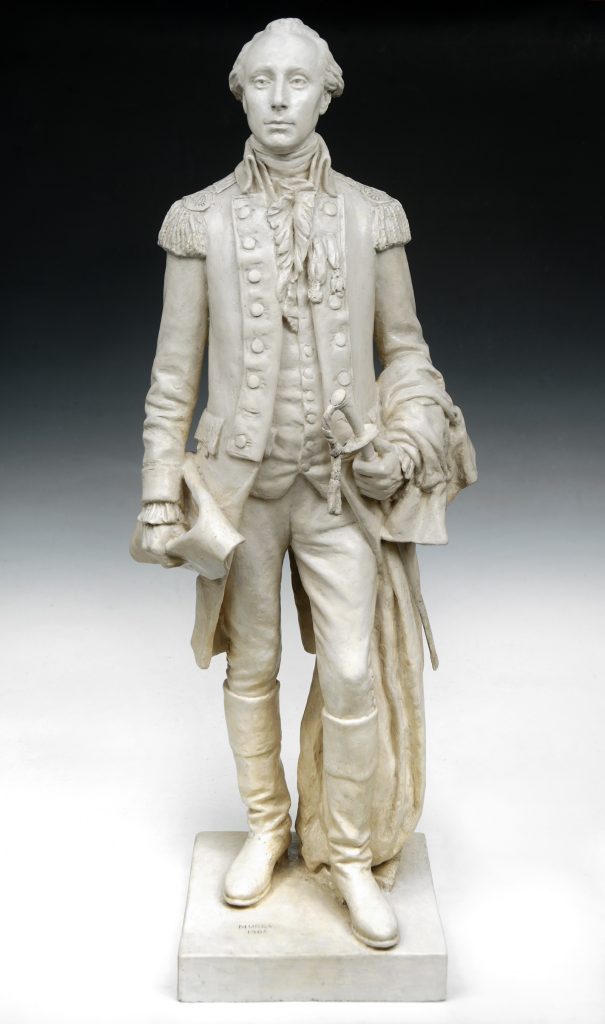
Marquis de Lafayette
Samuel A. Murray (1869-1941)
1905Museum purchase, 2016
In his native Philadelphia, sculptor Samuel Murray created this painted plaster statuette of the marquis de Lafayette in 1905, during a period of renewed French-American friendship and celebration of their shared heroes. Murray depicted Lafayette in the uniform of a Continental Army major general, wearing the Eagle insignia of the Society of the Cincinnati.